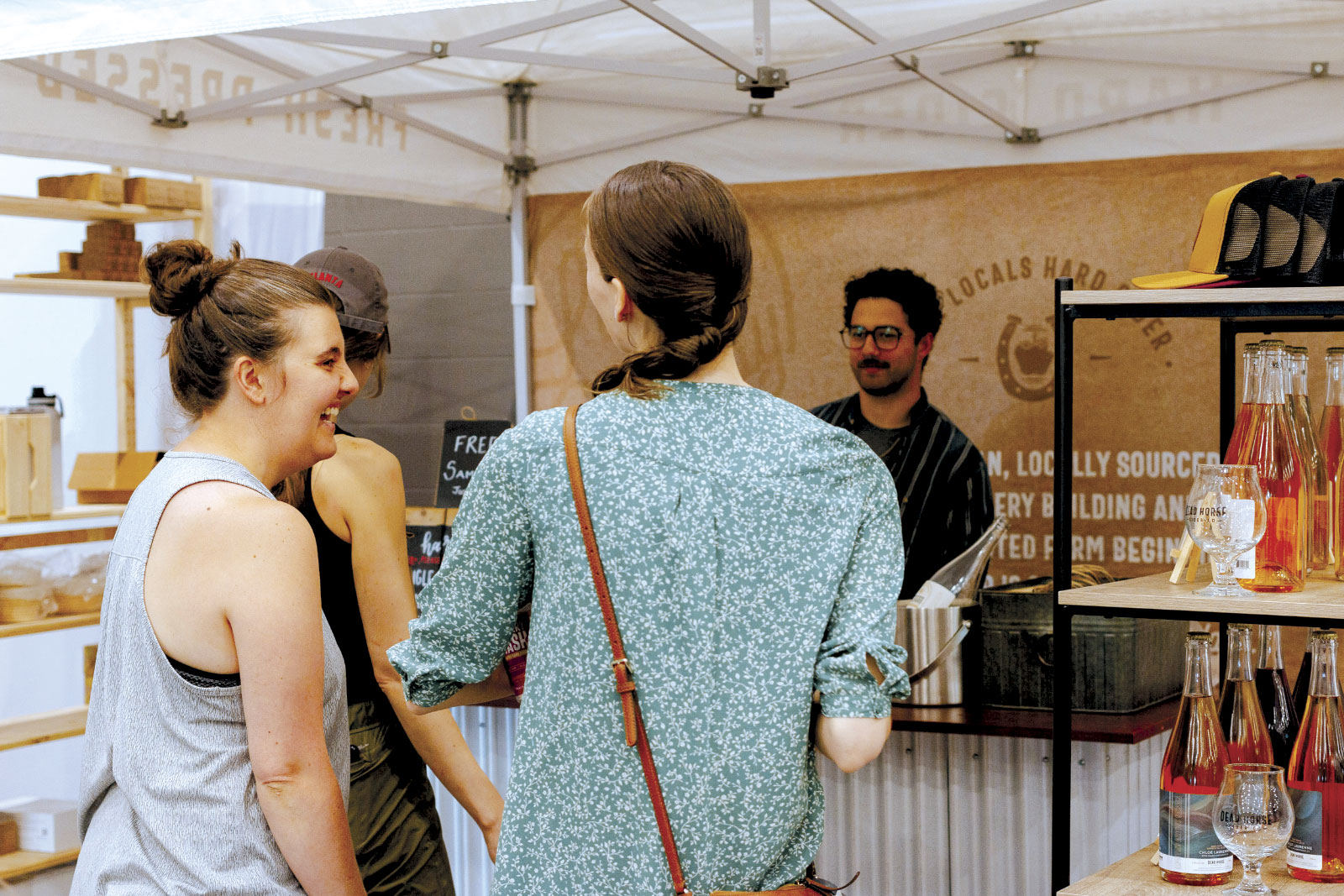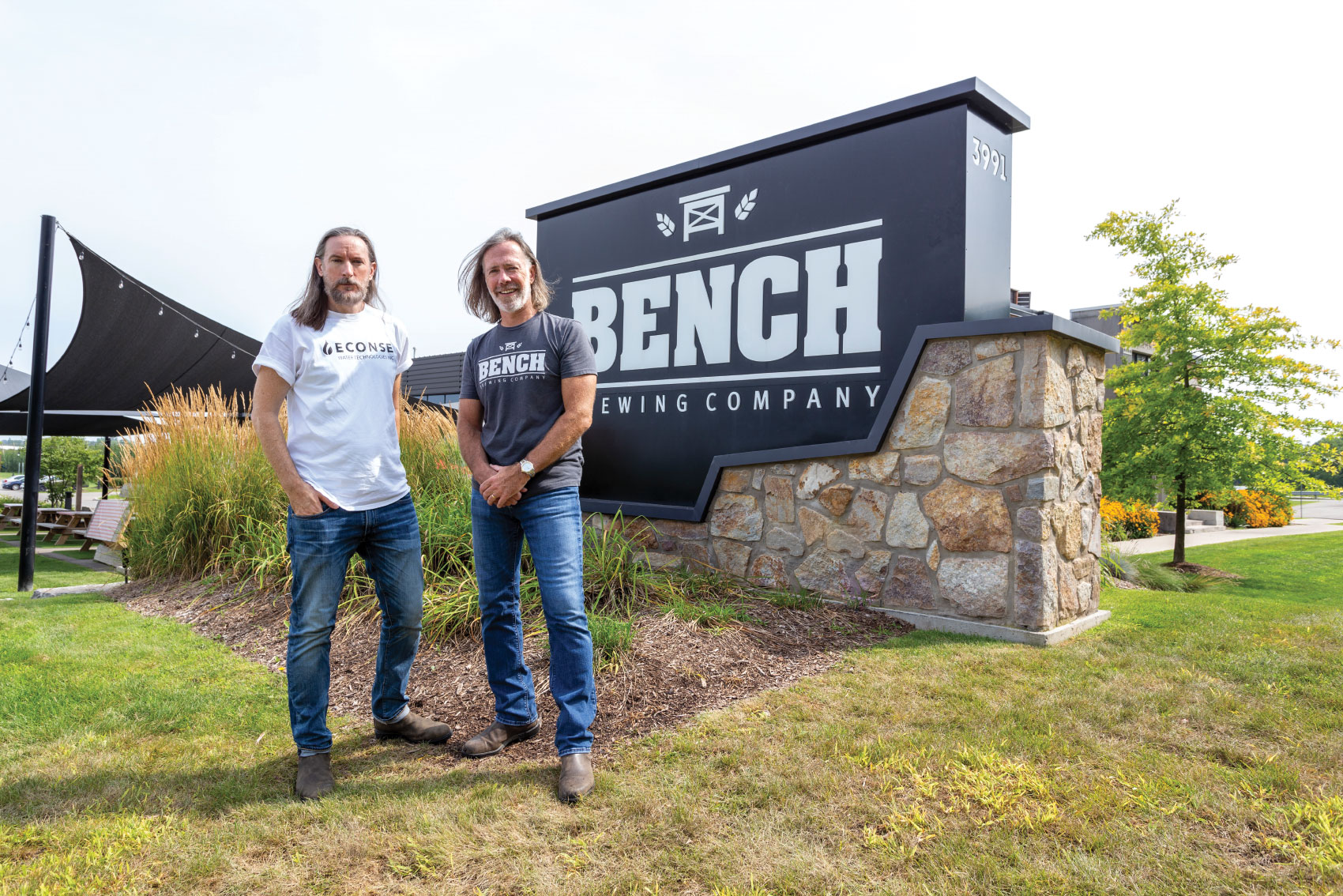Taking part in farmers’ markets and festivals is a rite of passage for many craft alcohol producers. It provides an opportunity to connect with potential customers, tell them what their brand is all about and sell products. While some brands make selling at markets look effortless, many new vendors struggle to create an eye-catching market booth. They often find the constant ordeal of packing up, setting up and tearing down their booths to be more hassle than it’s worth.
Marcus Wiebe, founder of Dead Horse Cider Company in Manitoba, and Adam Keil, co-founder of Mountainview Brewing in British Columbia, discuss their tips and tricks for making going to markets and events easier for craft alcohol producers.
Booth design and set-up
One key element of creating a successful and eye-catching booth is incorporating elements of the brand’s physical location and atmosphere. Keil says the focal point of Mountainview Brewing’s booth is its jockey box – a portable draft beer dispensing system. Most of the jockey box cover is made of wood, which gives a rustic look to the booth display. It also helps evoke the feeling of the brewery, surrounded by woods in the rural town of Hope. In the future, Keil plans to update the jockey box cover to be a miniature replica of Mountainview Brewing. He believes that doing so will transform their jockey box cover into a natural conversation starter and attract more visitors to their display booth.
Wiebe, whose cidery is also in a rural location, echoes a similar sentiment. He says the backdrop of a display should not necessarily be more product. Instead, it should “be pictures of your taproom, vineyard or cidery, to convey your brand.” Wiebe uses markets to extend the cidery business, and so his focus is to introduce people to the brand and entice them to visit Dead Horse Cider Company. “We want to draw people to our cidery [and] to our orchards, so that they make the drive out to see us. That is the goal with the markets. [It] is to show people who we are and get them to come to us,” he said.

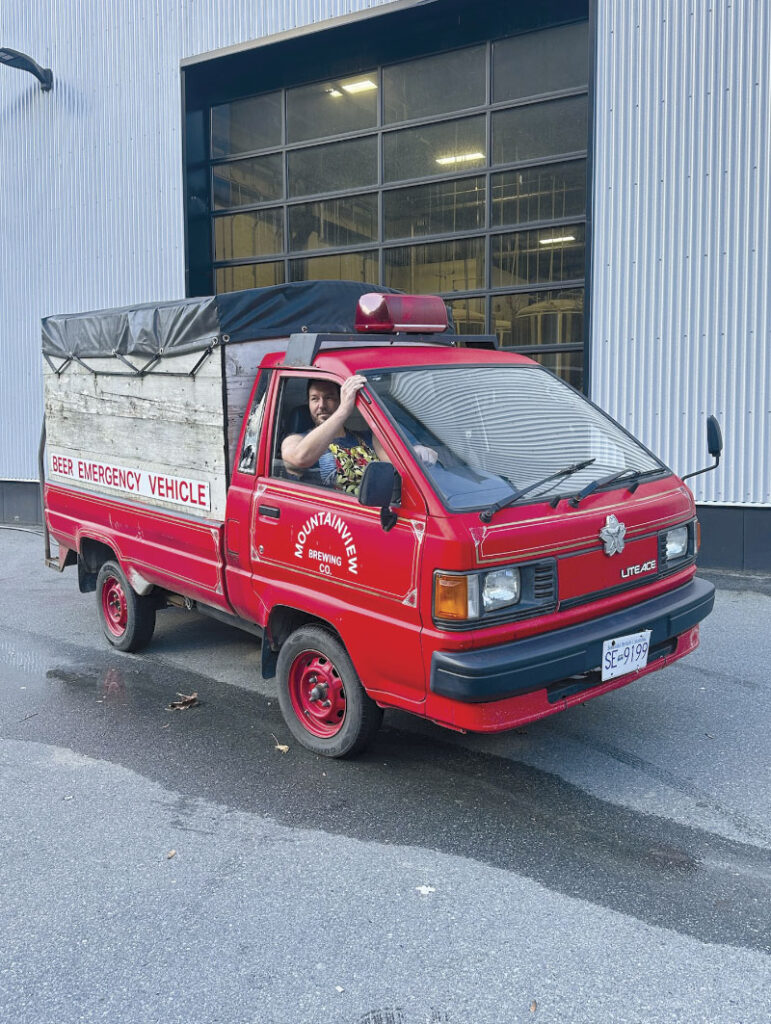
When Wiebe first started going to farmers’ markets in 2019, he had extravagant displays that took a lot of work to set up three times a week. Since then, he has opted for a more stripped-down look, prioritizing displays that are easy and repeatable. He stresses that booth set-up and tear-down should be something other team members can easily replicate, since, as the business grows, there may be multiple events on the same day.
Aside from making the process of setting up a display as efficient as possible, Keil tries to envision how people will interact with the booth when they approach it. For instance, if the booth is at a drink festival and drink tokens are given out, how will the tokens be taken? How will people receive their samples? It is important to consider the flow of people around the booth and build the booth display around that.
Keil has also observed the value of having something vertical on the display table and not just having everything sit flat. “That vertical piece is hugely important in catching people’s eyes. They’ll try the sample and hang around for a moment to appreciate the display,” Keil said. This vertical piece is another value-added feature that helps start conversations with potential customers. It can be as simple as a raised wooden display stand with products on it, or as complicated as Keil’s vision of a miniature replica of his brewery.
Packing and transport
When packing up for markets, Wiebe goes through his checklists to ensure that no items are forgotten. Most items already live in a specific set of bins that contain the necessary supplies and equipment for events. Having these designated bins helps to streamline the process of loading and setting up the display booth. Before loading up the van, Wiebe also tries to forecast sales so that he doesn’t bring too much or too little of his products to the market.
Supplies Wiebe considers essential include wipes for cleaning spills, a cash box, a point-of-sale (POS) system and a backup POS system for emergencies. Cleaning rags are an essential item for Keil, too. He is also sure to bring garbage bags, extra gaskets and tools for fixing the draft system.
After each market, Wiebe will debrief with his team to discuss what worked and what didn’t, so that they can improve for future markets. Even with this thoughtful planning, Wiebe has experienced some market mishaps. He’s had his vehicle break down while on route to a market and has had his tent fly up and away on windy market days. Still, he takes it all in stride and reminds himself not to “get too caught up in it and remember that it is going to be okay.”
What to bring and what not to bring
Historical sales, geography and seasonality inform much of what Wiebe and Keil decide to bring to events. Keil observes that fruited sours seem to sell better in the Lower Mainland, closer to the city of Vancouver. However, traditional beer styles seem to be favoured in the British Columbia Interior communities. After analyzing past sales in each area, Mountainview Brewing decides what to bring to events. This often results in different products being brought to events in Vancouver versus the Okanagan.
In the early days of going to markets, Wiebe brought many single 355 millilitre cans in various flavours. He quickly realized that packing, transporting and displaying so many single cans made setting up his display more difficult. He also felt that it wasn’t worth his time to only make a $5 sale. He stopped bringing single cans in favour of four-, eight- and 12-packs in various flavour combinations. This way, customers still had a variety to choose from, and the minimum spending amount was raised.
In desperate times, [markets have] helped us stay afloat.
Marcus Wiebe, Dead Horse Cider Company
Wiebe advises craft alcohol producers to “pick a number that is worth your time and don’t bring anything under that.” Since marketgoers are often eager to support local businesses, Wiebe thinks it makes more sense to raise the minimum spend at a market booth, especially since it is often the same amount of work to make a $5 versus a $30 sale.
In Mountainview Brewing’s early days, Keil brought a variety of merchandise to events, including T-shirts and hoodies. While smaller items such as branded tasting glasses and stickers proved popular impulse buys, he never sold a single hoodie. Keil reflects that it is most likely because the price point of clothes, especially hoodies, is higher, and hoodies aren’t an item that people buy in the spur of the moment. Keil stopped bringing hoodies to events, but continues to bring branded glassware and stickers.
Marketing to customers
The popular mantra, “getting liquid to lips,” holds true for craft alcohol producers when marketing their products at events. While giving out free samples of alcohol at events always entails additional paperwork and can necessitate bringing extra staff, having people taste a product is the single best way to make a sale.
Wiebe cautions against getting caught up in talking to a single customer for too long. He tries to streamline the process of handing out samples by limiting sample options. Instead of offering 10 samples and overwhelming people with choices, he limits sample options by asking pointed questions to get a sense of what a person likes to drink. “If they like to drink beer, then I know what sample I am going to offer them,” he said. Wiebe has seen people start drifting away when he spends too much time talking about all the different samples, so now he tries to just give them what he thinks they will like and lets them have their space.
Additionally, Keil notes the importance of having an extroverted and friendly manner. Rather than waiting for people to approach your booth, “invite people to come talk to you. Sometimes people are sort of just window shopping.” If you can get their attention, try to invite them over for a free sample, or make a comment that will “invite them to come and hang out for a few minutes and learn about your product. It’s kind of silly, but I think that is the best tactic.”

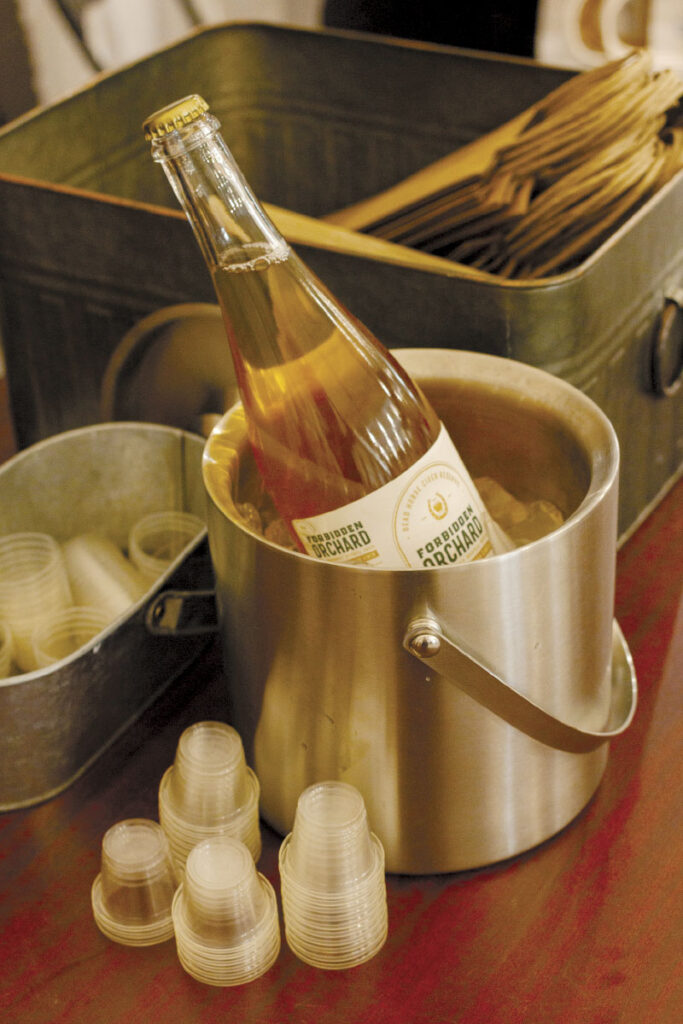
In terms of social media, Wiebe tries to post an image on their brand accounts to let people know what market they are in and whether any seasonal, market-only products are available. Wiebe admits that these kinds of posts can feel repetitive after a while and finds social media marketing to be a totally different landscape than it was just five years ago.
Another marketing strategy Wiebe has tried is giving customers a card for free shipping when they order online. He admits that this ‘free shipping’ card idea was a flop. Wiebe believes that since the savings from ‘free shipping’ only amounted to around $5, it probably wasn’t enough of a discount to entice people to start ordering online. Although he has yet to try it himself, Wiebe has seen other craft alcohol producers give customers a ‘free drink’ card when they bring a friend to the brewery. Mostly, Wiebe hopes to build the brand by maintaining consistency when going to markets, since showing up at the same market routinely can help the brand develop a loyal following.
Lessons learned
In the early days of going to events, Keil once brought a pilot batch of beer that was made with fresh-harvested plums. While the beer wasn’t reproducible on a larger scale, Keil was proud of it and wanted to share it with others. However, he noticed that people who tried the product were quickly disappointed when they found out that this amazing product was not available for purchase anywhere else. Now, Keil makes sure to always bring his core products and seasonal products that are available in the brewery or at liquor stores. He no longer brings these “one and done beers,” as he wants there to be the potential for a second sale.
Another lesson Keil learned is how to adapt his business in the face of changing consumer demand. When Mountainview Brewing first opened, its fruity and sour beers garnered a lot of attention, so Keil transitioned the business to producing more unusual beers that would catch people’s eye. Over the past two years, he has seen the market switch again, where their more traditional beer styles are selling year-round, so he pivoted again, putting the primary focus on core products rather than special releases.
Staffing
When staffing markets, craft alcohol producers usually look at their sales data to determine how many staff are needed. If historical data isn’t available, they will usually ask event organizers how much foot traffic is expected. For small markets where people are spread apart, one person is usually enough. Larger markets with denser foot traffic can require two people, especially if samples are being poured.
Keil says it’s important to have the right person at a market, someone who is interested and genuinely cares about the product. When training staff for events, both Keil and Wiebe bring their staff to the taproom to teach them who they are, what the brand stands for and have them sample the products.
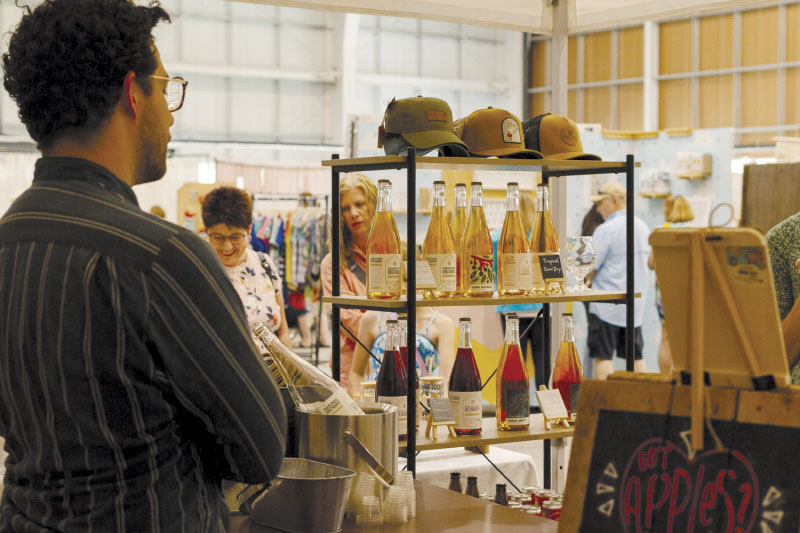
Sales and customer experience
In terms of tools for managing sales on the go, Wiebe uses Square, since it is well-known, has an app that integrates with phones to accept payments and has standard fees. Other common POS systems include Clover, Shopify POS, PayPal and Stripe.
To connect with customers, Keil makes sure to bring business cards to events and encourages people to reach out to them on social media. In order to reduce the friction for potential customers to purchase their products, Keil created a QR code that links to Google Maps with the location of all the liquor stores that carry their products. Keil says that loading all the store locations into Google Maps and keeping the map up to date is a bit of a hassle to maintain; however, it is an extremely useful tactic to make buying their products as easy as possible.
Advice
For Wiebe, going to markets has been a huge help in growing Dead Horse Cider Company. “In desperate times, [markets have] helped us stay afloat,” he said. Nevertheless, Wiebe acknowledges it takes a lot of hustling and grinding to keep setting up and taking down the booth constantly. “There are a lot of farmers’ markets. It takes a lot of your time, a lot of your weekends, but we have had to do it to stay in it,” he said.
As well, it can take time to determine which markets and events are worth going to. Some markets can yield extremely profitable sales, while other markets are just a means to further advertise the business and introduce people to the brand. For craft alcohol producers who are going to their first market, Wiebe and Keil say that the most important thing is to be excited to be there and not be on your phone. Being part of an event is “a chance to talk to people that are your future customers. They’re the ones who matter most,” said Keil.

